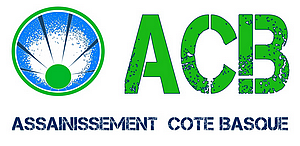Content
Draw certain specifications which are easily understood by users and programmer in precise and detailed form. Include all the activities such as phone support or physical on-site support for users that is required once the system is installing. Finally, prepare a design document which will be used during next phases.
- Both analysis and design can be performed incrementally, and the artifacts can be continuously grown instead of completely developed in one shot.
- In some cases, these can lead to going back to the first step of the software development life cycle.
- System development life cycles are typically used when developing IT projects.
- The testing is continued until the end-user finds it acceptable and it may be repeated to check for interoperability, errors, and bugs.
- Finally, approval to progress to the development phase must be granted to complete the systems design phase.
Larger systems may require longer maintenance stages compared to smaller systems. Each of the testing steps in the development/configuration phase is tested against a step in the design phase. This ensures that the objective of the system is met and that it is fit for purpose. At this stage, the product is ready to be shipped to customers, and deployment of the software to the manufacturing environment is underway. However, many businesses like to distribute the product in many delivery contexts, such as a testing or staging area.
Ultimately, any development team in both the IT and other industries can benefit from implementing system development life cycles into their projects. Use the above guide to identify which methodology you want to use in conjunction with your SDLC for the best results. The Big Bang model is incredibly flexible and doesn’t follow a rigorous process or procedure.
The development process can only continue once management approves the recommendations from the feasibility study. Phase 3 details the specifications, features, and operations required to meet the functional requirements of the proposed system development life cycle phases. This is a step for the end-user to discuss and determine the specific business information requirements of the proposed system. Software engineers will follow the coding standard to develop and complete the development process according to software requirement specification.
Phase 3: system design
In these seven phases of the systems development life cycle the product programme code is written in accordance with the design document’s specifications. All of the preliminary planning and outlining should, in principle, make the actual development step pretty simple. It can be seen that testing is a main consideration in Benington’s model of information system development. Another variation of the SDLC model, where project verification and evaluation of each phase is also required, is the V-shaped model. In contrast, the waterfall model may be more appropriate for low-risk projects where requirements are well understood and potential bugs can be identified more easily. Every piece of hardware or software will go through a development process, which can be thought of as a multi-step, iterative process.
In other words, it includes the front end and back end developing processes. Along with the core functions the software should feature, it includes the UX/UI design of the application – all the basic qualities the product must provide for its end-users. Each of these phases requires involving different specialists and a diverse number of skills for successful project completion. A testing phase is incorporated into each development stage to catch potential bugs and defects.
It is also where system analysis takes place—or analyzing the needs of the end users to ensure the new system can meet their expectations. Systems analysis is vital in determining what a business »s needs are, as well as how they can be met, who will be responsible for individual pieces of the project, and what sort of timeline should be expected. In this step, you move your project to production by moving data and components from the old system and placing them directly on the new system via a cutover. This can be a risky move, but switching is usually off-peak and minimizes risk in system development life cycle phases.

The testing is continued until the end-user finds it acceptable and it may be repeated to check for interoperability, errors, and bugs. Additionally, validation and verification are also done during this phase ensuring the program’s successful completion. Unit Testing – takes individual units of software source code and tests them to determine whether they are fit for use.
Anyone who is involved in any stage of development will tell you that the most important systems start out with a good plan. Without a planning phase, it is difficult to have an idea of what needs to happen and when it needs to happen. As you can see, different SDLC methodologies https://globalcloudteam.com/ are used depending on the specific peculiarities of each project, its requirements, the core vision of the client, and more. Knowing the specific characteristics of each SDLC model can help to pick up the one that fits best to deliver the high-quality, effective product.
Management Skills
In the end, developers usually come up with a testing report that forms up a test case by listing all the issues detected and fixed. Additionally, you can check the testing criteria and ensure the software product meets all the requirements defined by the SRS document. The new seven phases of SDLC include planning, systems development life cycle phases analysis, design, development, testing, implementation, and maintenance. A system development life cycle or SDLC is essentially a project management model. It defines different stages that are necessary to bring a project from its initial idea or conception all the way to deployment and later maintenance.

Typically, the main purpose of this phase is to find out the problems and decide the solutions to complete the project successfully. If needed then this stage defines the new system requirements, project schedule and determine its objectives. And if not needed then this stage defines the problem of existing system, scope of existing system and will take an initiative to improve the system.
Outsourcing Software Development to Ukraine – A Complete Guide
The fourth phases of system development life cycle is development phase. In this stage, software engineers, database administrator and network engineer start for application development based on system design. Once the requirements analysis phase is complete then the design phase starts. This design phase of SDLC process includes the design of system’s architecture, network diagram, databases, user interfaces, and system interfaces. Planning stage is the vital stage of the system development life cycle process because it determines required resources, timeframe, budget, personnel, technical aspects to complete the project. A system development life cycle is a conceptual model that delineates the stages involved in developing and implementing a system.

At the completion of this stage, a development specification is produced that is sufficient to perform detailed design and development. The goal of analysis is to determine where the problem is, in an attempt to fix the system. Systems development specialists at Innovative Architects possess extensive experience in managing these type of projects. If you have a situation at your organization and you think a customized software solution may be what you need, contact us today.
Drawbacks of Systems Development Life Cycle (SDLC)
Sequential or big-design-up-front models, such as waterfall, focus on complete and correct planning to guide large projects and risks to successful and predictable results. Other models, such as anamorphic development, tend to focus on a form of development that is guided by project scope and adaptive iterations of feature development. The third phase describes, in detail, the necessary specifications, features and operations that will satisfy the functional requirements of the proposed system which will be in place.

T’s important that the software overall ends up meeting the quality standards that were previously defined in the SRS document. Now it must be tested to make sure that there aren’t any bugs and that the end-user experience will not negatively be affected at any point. The design stage is a necessary precursor to the main developer stage. It helps to define the problem and scope of any existing systems, as well as determine the objectives for their new systems. 1.Results of software testing must be documented and approved by the IT Manager and the System Owner.
What is System Development Life Cycle
The system development life cycle component of the course introduces aspects of methodology, the unique phases, and the roles that IT professionals play in the various stages of a project. Students learn how to collect and document requirements, translate them to application design, and trace each project artifact to its original scope. Once all planning and requirements are in place, the plans are handed over to the systems architect who can then start working on the design of the systems. Often the systems to be designed are based on software or IT infrastructure. This means that the systems development designers will likely be IT specialists or software developers.
What You Need to Know About System Development Life Cycle
Perhaps most importantly, the project timeline is set during the planning phase. This can be important when developing commercial products that need to be put on the market by a specific date. It identifies whether a new system is needed to achieve a company’s strategic goals.
This is particularly important for large systems, which usually are more difficult to test on the debugging stage. This stage helps to set up the problem or define the pain the software can target, define the objectives for the system, and draw the rough plan of how the system will work. Mark Preston is a passionate software engineer, with over two decades of experience.
When I googled the “software development life cycle definition” I found different variants. Early in the system life cycle systems engineering should describe the tests that will be used to prove compliance of the final system with its requirements. The seventh final phase of the system development life cycle phases includes maintenance and the required regular updates. This step allows the end-user to fine-tune the system as needed to improve performance, add new features, or meet additional user requirements in system development life cycle phases.
Many consider this the most robust SDLC stage as all the labor-intensive tasks are accomplished here. You can repeat the test, especially to check for errors, bugs, and interoperability. These tests are run until the end-user determines that they are acceptable. Another part of this phase is validation and validation in system development life cycle phases.
This includes all the specifications for software, hardware, and network requirements for the system they plan to build. This will prevent them from overdrawing funding or resources when working at the same place as other development teams. Object-oriented analysis is the process of analyzing a task , to develop a conceptual model that can then be used to complete the task. A typical OOA model would describe computer software that could be used to satisfy a set of customer-defined requirements. During the analysis phase of problem-solving, a programmer might consider a written requirements statement, a formal vision document, or interviews with stakeholders or other interested parties.

